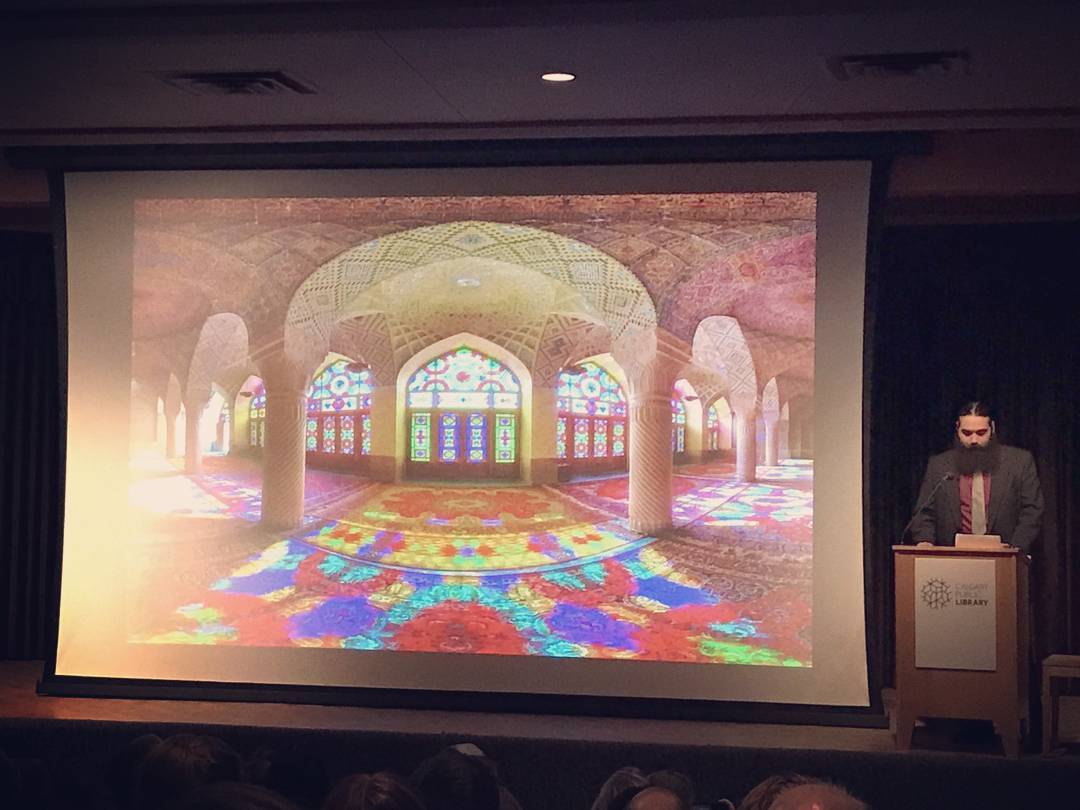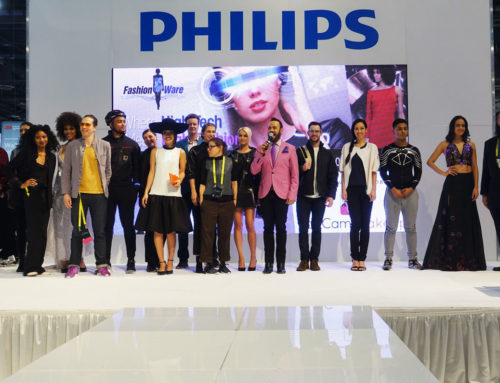What is PechaKucha and Why Are We Talking About Transparent Technology?
PechaKucha, coming from the Japanese word meaning chit-chat, is a presentation style created by Astrid Klein and Mark Dytham of Klein Architecture. The format limits presentation time by allowing the presenter to only show 20 slides for 20 seconds each. Zyris had the pleasure of being invited to present at the PechaKucha Calgary February 2017 event where the topic of discussion was transparency.
Interestingly, the topic of transparency was widely discussed across each of the 10 presenters. Because of our inherent love of innovation, technology, and ultimately our future, we presented on the marriage between transparency and technology.
Check out our ‘Transparancy and Technology’ presentation by watching the video
Digest and interpret our ‘Transparancy and Technology’ presentation at your own pace
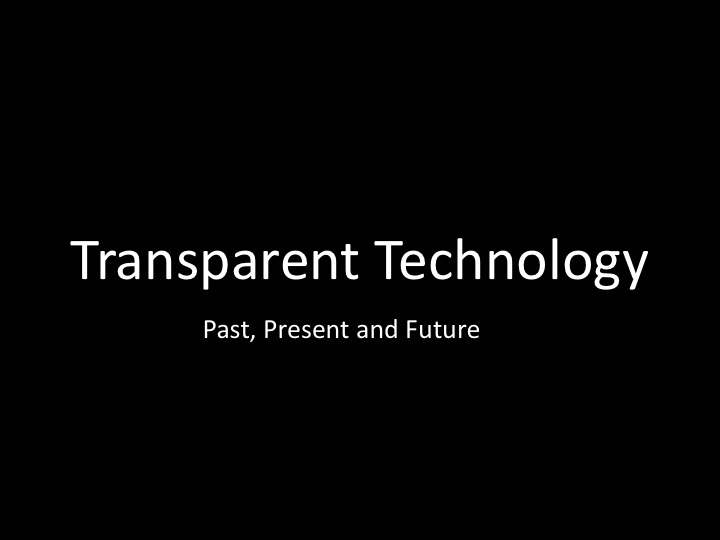
Introduction to Transparancy and Technology
This evening I’m going to take you on a journey of the past, present and future of transparent technology; with the hopes that some of you will be inspired.
The oldest form of transparent technology is so ubiquitous that it’s hard to consider as being a piece of technology.
Anyone care to take a guess at what that is?
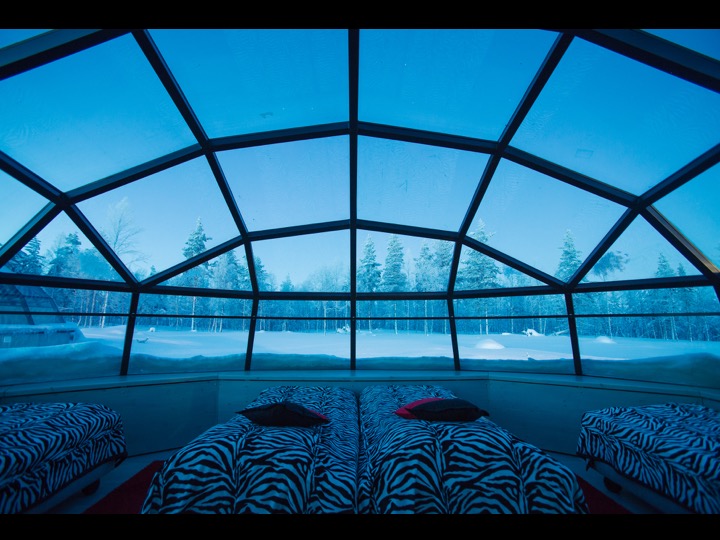
Early History of Glass
Did anyone think of glass?
Man made glass can be dated as far back as 3,500 BCE. Originating in the Eastern Mediterranean region, it, like so many other technological innovations was discovered by accident.
It was a byproduct of metal-working and a glazing process called faience.
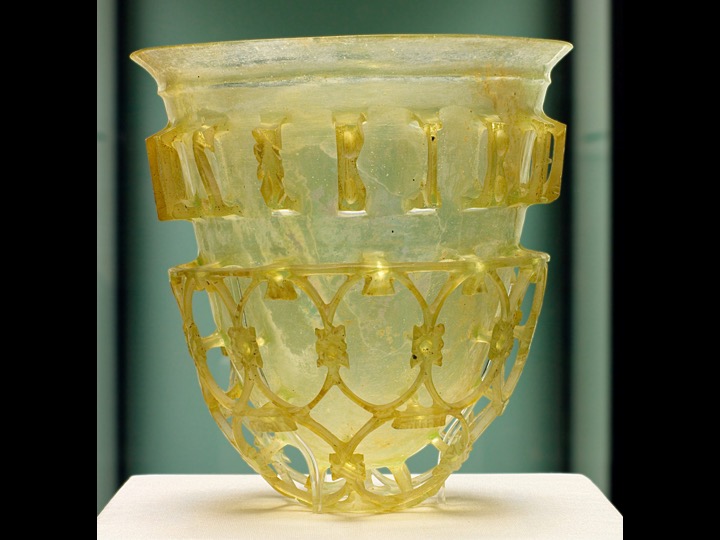
Glass Technology
During the 1st century BCE, the glass industry was revolutionized through the invention of glass blowing techniques.
This helped make glass production inexpensive, encouraging its use over the next 1,000 years in everything from ART to architecture and helped the technology spread throughout Europe and eventually the world.
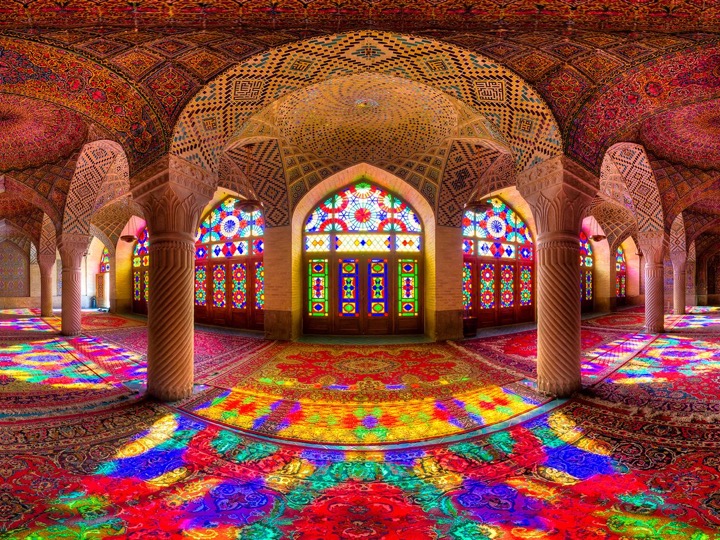
Stained Glass
Centuries of refining both the techniques and glass quality, gave rise to greater and more complex artistic endeavors, leading to the creation of some of the most iconic and breathtaking pieces of architecture.
Pictured here the Pink Mosque in Shiraz, Iran was built in the late 19th century.
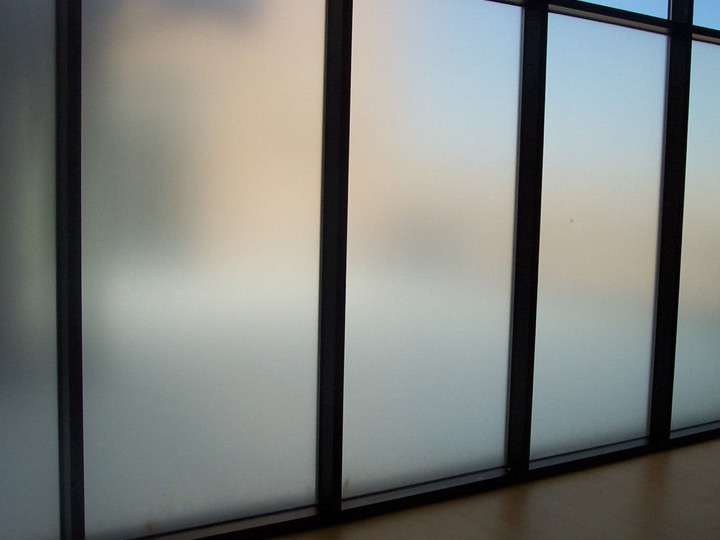
Frosted Glass
Around that time a new glass finishing technique known as acid etching started gaining popularity.
Acid etching allowed glass to be utilized in applications previously reserved for opaque materials where privacy was a necessity. This newly created type of glass provided a balance of transparency and privacy.

Gorilla Glass
Despite over five millennia of innovation, glass was still a very heavy and fragile material. But that all began to change in the 1960’s when research into muscled glass began.
Over the next 50 years glass slowly became lighter, stronger and more pervasive, eventually, leading to its use in billions of consumer devices.
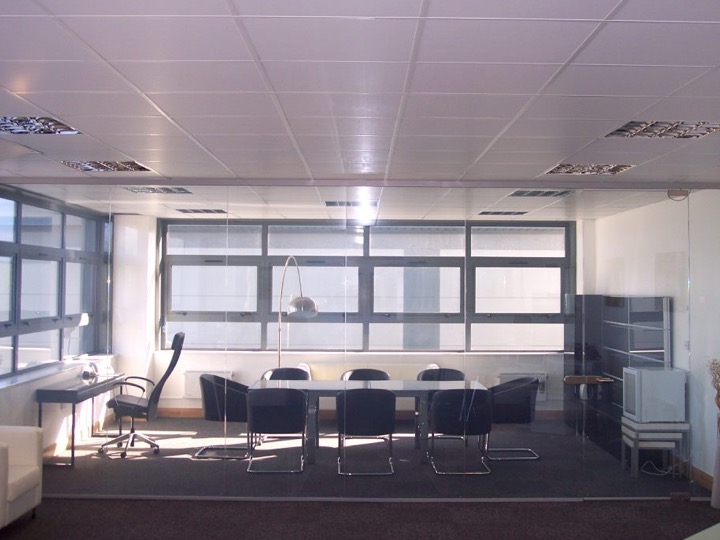
Glass Technology Transition
Although there have been many innovations in the strength, transparency and color of glass, it is still very close to the material that was accidentally discovered; its stagnant and generally single purpose.
But with the invention of a new type of glass that’s all about to change.
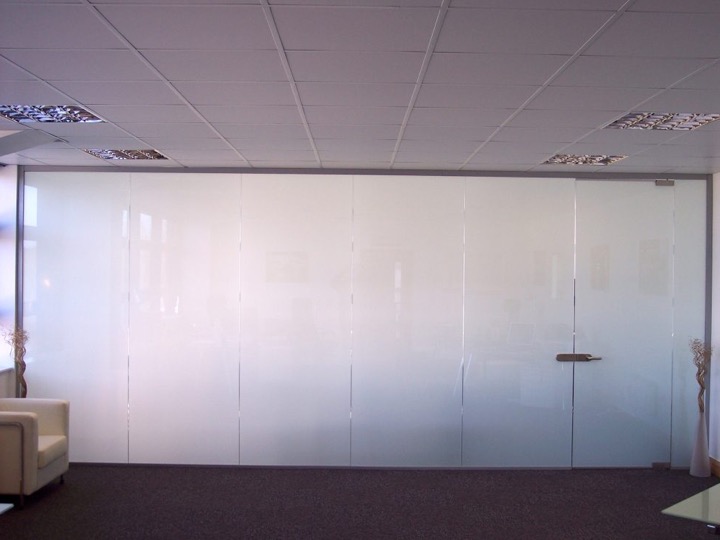
Introducing Electrochromic Glass
No, this photo isn’t showing how the board room looked before, someone left the window open overnight in the middle of a Calgary winter, nor my amazing Photoshop skills.
This is the same office with the same glass taken only a few seconds later.
So what exactly is this sorcery?
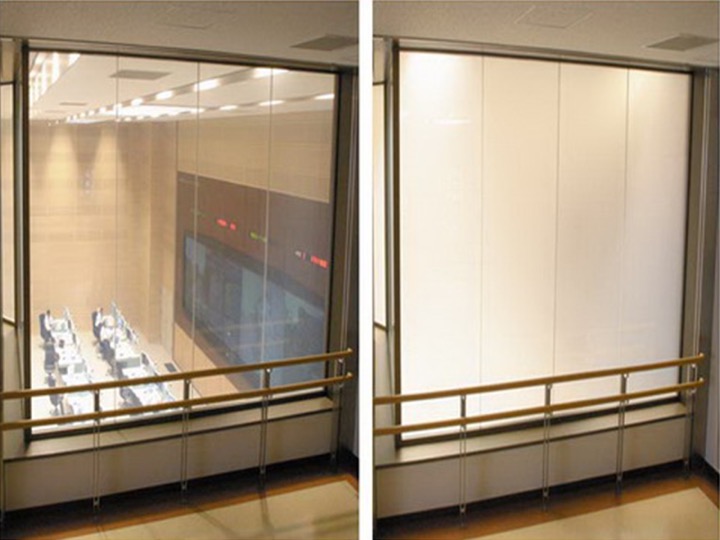
Electrochromic Glass
Electrochromic glass!
Also known as Smart Glass, this type of glass has the unique ability to change from transparent to fully opaque in only a few seconds.
Because of the way it works, you can specify the degree of opacity allowing to you to control exactly how much privacy you need.
How exactly does it work?
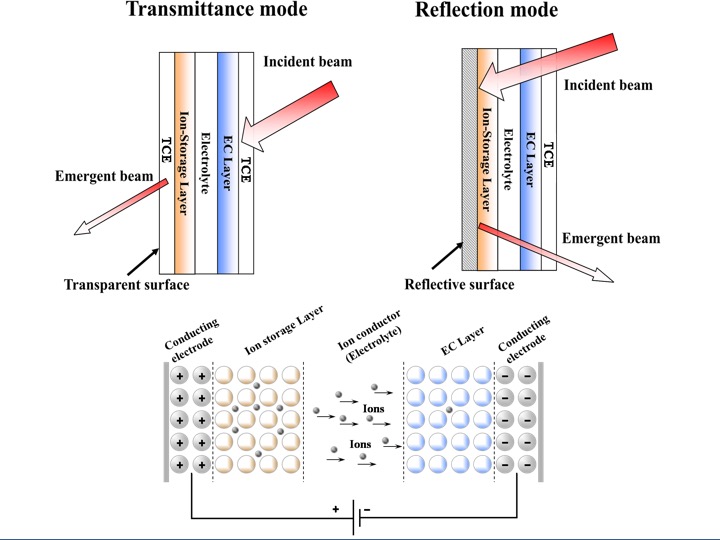
How Electrochromic Glass Works
That’s how.
While an accurate description of how Electrochromic glass works would take more than 20 seconds to explain.
Essentially, by applying a voltage, ions are moved from a storage layer to a surface layer where a chemical reaction changes the properties of the glass allowing it to transmit or reflect light.

Electrochromic Windows
Smart Glasses ability to easily control it’s opacity means it has a wide range of applications.
Pictured here, the Boeing 787 Dreamliner utilizes Electrochromic glass to provide passengers with the ability to customize the opacity of their window, improving not only their experience but also eliminating the need for plastic window covers.
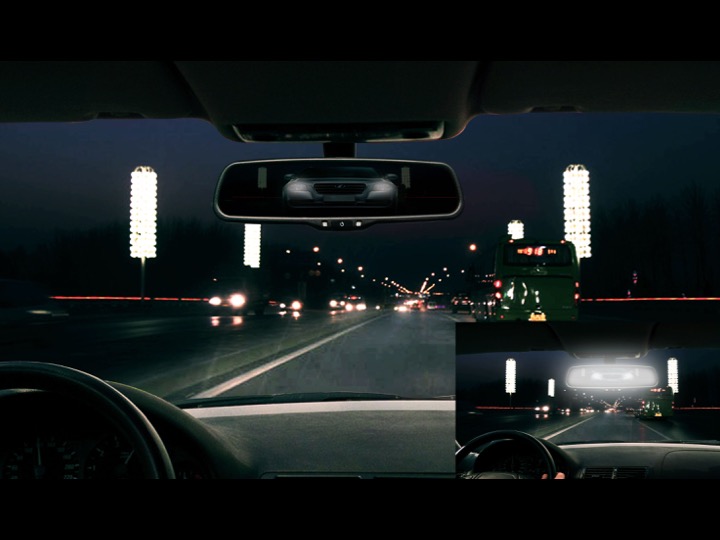
Electrochromic Mirrors
A minor alteration to the manufacturing of Electrochromic glass gives it the ability to control the amount of light reflected.
This makes it perfect for addressing one of the most frustrating things about night time driving in Calgary, being blinded by one of the hundreds of unnecessarily large pickups with overly bright headlights.
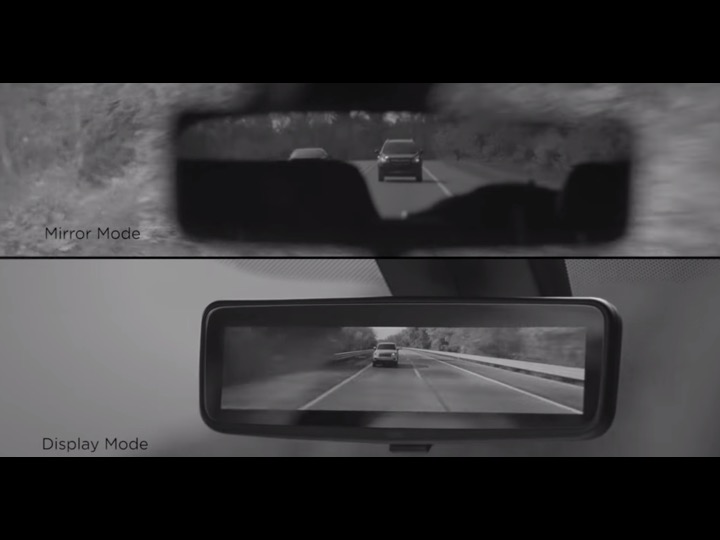
Future Electrochromic Applications
Everything I’ve mentioned about Smart Glass to this point is commercially available and accessible to anyone. There are even a growing number of manufactures who produce Electrochromic film, allowing you to integrate this technology into existing devices.
This photo is an example of a rear view mirror modified to house an LCD screen behind reflective Electrochromic film.
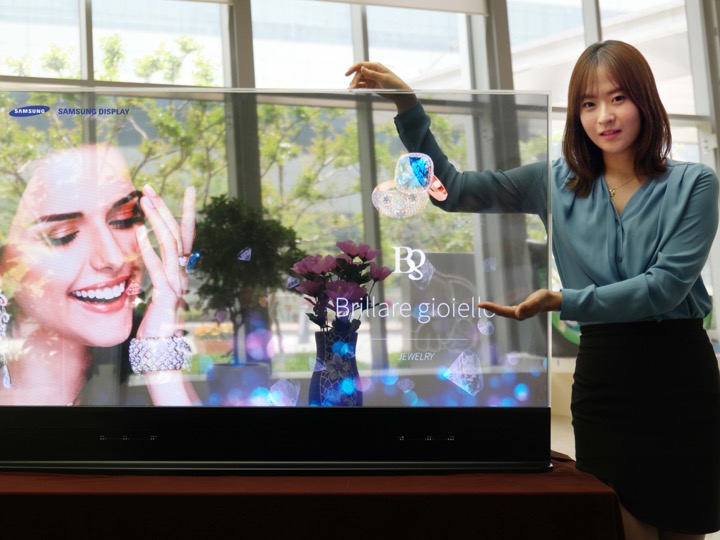
Future of Transparent Technology
So we’ve seen where we’ve come from and where we currently are with transparent technologies.
The future is even more exciting, in the next few months and years we are going to begin to see more and more transparent displays in TV’s, Mobile devices and even wearable’s.
But that doesn’t even come close to some of the innovative leaps on the horizon.
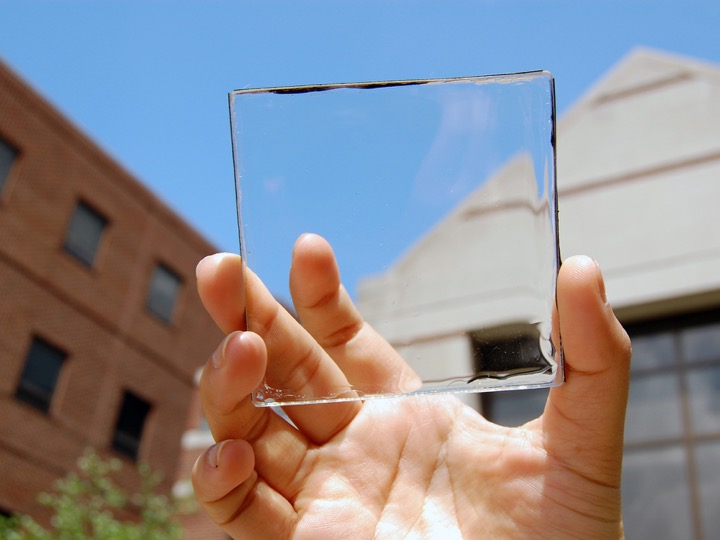
Transparent Solar Cells
While at first glance this appears to be a simple piece of glass, it is in fact something far more revolutionary.
The glass square is actually a transparent solar cell, capable of generating electricity using ultraviolet and near-infrared light, wavelengths of light completely invisible to our eyes.
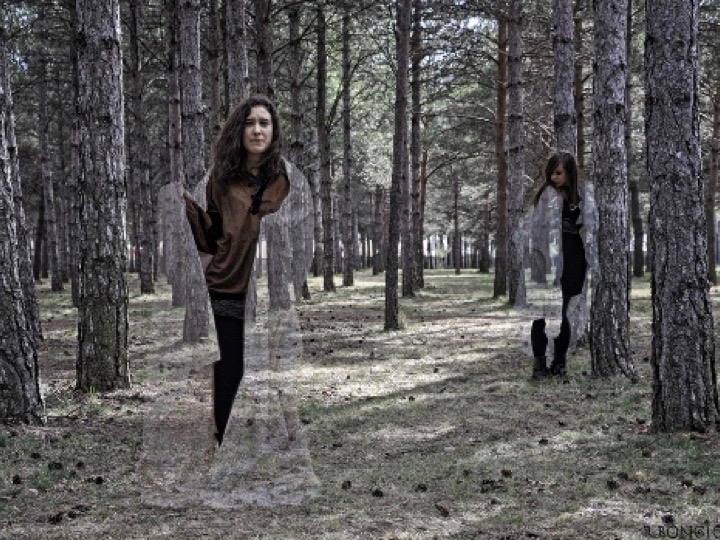
Invisibility Cloak, Part One
Arguably the most anticipated next step in transparent technology is the invisibility cloak.
It would allow us to not only scare the crap out of our friends or sneak into honeydukes, but it would close the gap between the magical and technological.
While we still have a long way to go before it works as well as it does in the picture, what we have now is a good start.
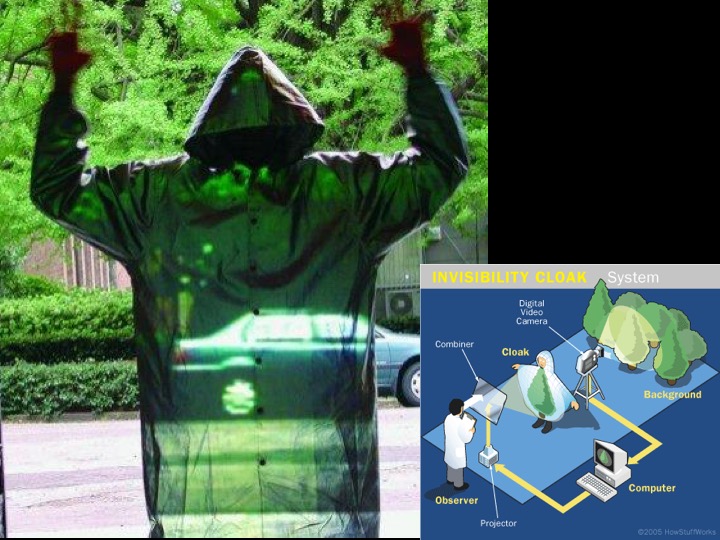
Invisibility Cloak, Part Two
It’s a good start if you’re willing to ignore the bulky projector, camera and infrastructure equipment that makes it all possible.
Regardless, the research being done to perfect these cloaks lays the foundation for what will one day be an actual invisibility cloak and not someone pretending to be a ghost in a raincoat.
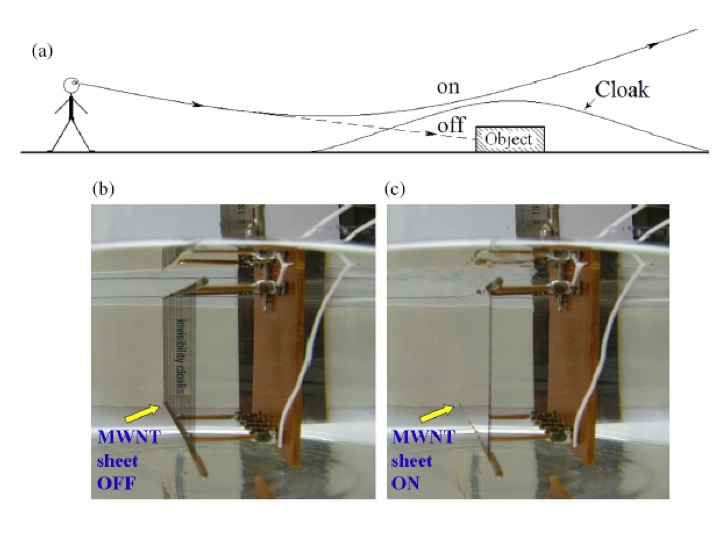
Refracting Light with Carbon Nanotubes
An alternative method to achieve invisibility utilizes the mirage principal and carbon nano-tubes, which are tube shaped nano scale structures comprised exclusively of carbon atoms.
The process uses an electrical field to alter the orientation of the nanotubes so they refract light rather than reflect it, giving way to a true invisibility cloak.

Not just Science Fiction
I’ve ended off on a technology straight out of fantasy and science fiction; and while some may look at this and say it’s right up there with the hover board, a technology we were promised and seem destined to simply continue waiting for, I believe we’re not far off from seeing some real leaps & bounds in transparent technology.

